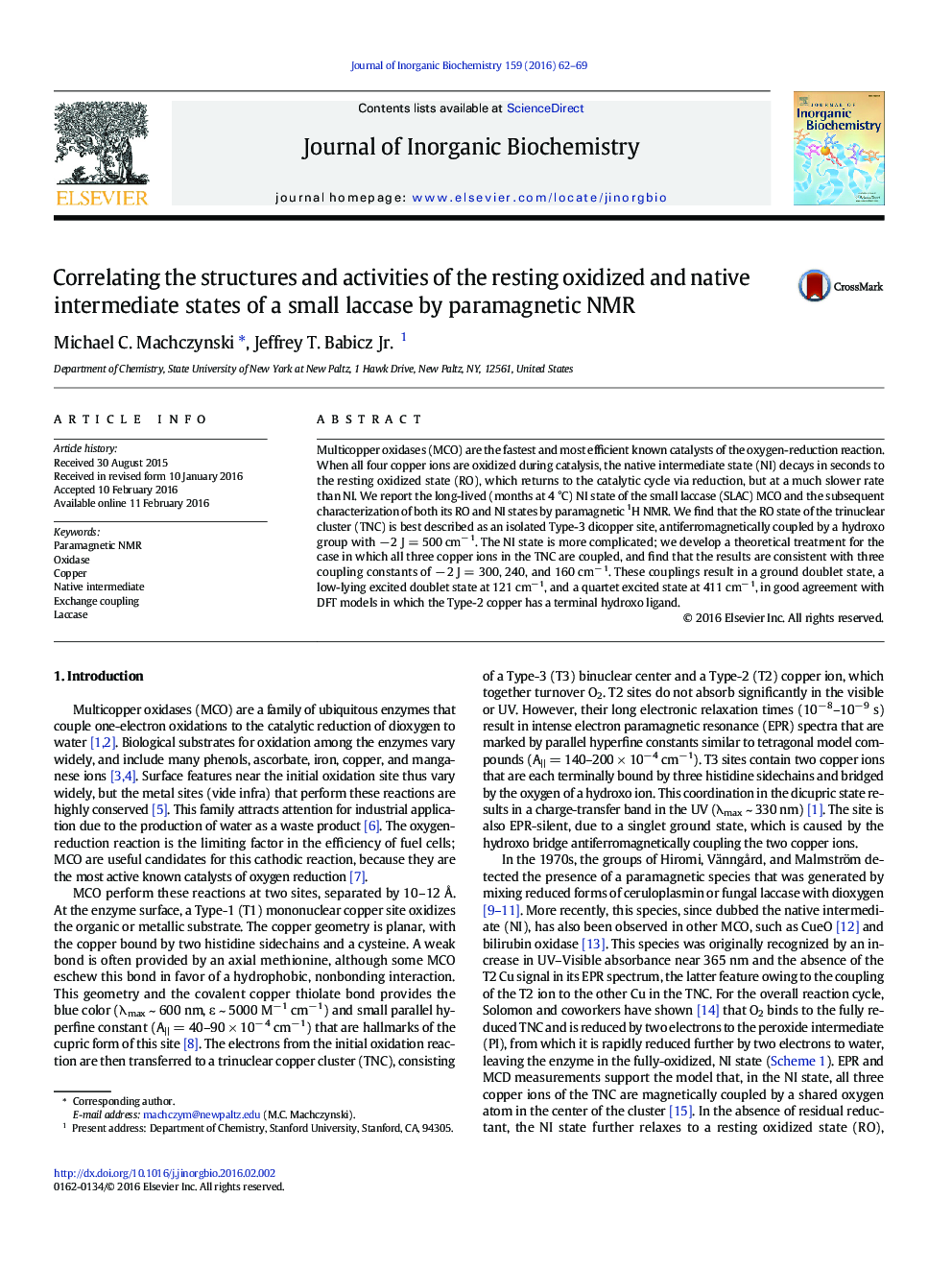| Article ID | Journal | Published Year | Pages | File Type |
|---|---|---|---|---|
| 1315832 | Journal of Inorganic Biochemistry | 2016 | 8 Pages |
•The native intermediate state of the small laccase persists for months at 4 °C and pH 7.•An isolated Type-3 copper site produces the 1H NMR spectrum of the resting oxidized state.•The site of three coupled Cu ions produces the 1H NMR spectrum of the native intermediate.•A method for calculating the chemical shifts in an oxidized Cu3 cluster is developed.•The energy of the quartet state supports the model of a hydroxo ligand at the Type-2 site.
Multicopper oxidases (MCO) are the fastest and most efficient known catalysts of the oxygen-reduction reaction. When all four copper ions are oxidized during catalysis, the native intermediate state (NI) decays in seconds to the resting oxidized state (RO), which returns to the catalytic cycle via reduction, but at a much slower rate than NI. We report the long-lived (months at 4 °C) NI state of the small laccase (SLAC) MCO and the subsequent characterization of both its RO and NI states by paramagnetic 1H NMR. We find that the RO state of the trinuclear cluster (TNC) is best described as an isolated Type-3 dicopper site, antiferromagnetically coupled by a hydroxo group with − 2 J = 500 cm− 1. The NI state is more complicated; we develop a theoretical treatment for the case in which all three copper ions in the TNC are coupled, and find that the results are consistent with three coupling constants of − 2 J = 300, 240, and 160 cm− 1. These couplings result in a ground doublet state, a low-lying excited doublet state at 121 cm− 1, and a quartet excited state at 411 cm− 1, in good agreement with DFT models in which the Type-2 copper has a terminal hydroxo ligand.
Graphical abstractThe on- and off-pathway oxidized states of multicopper oxidases have three and two magnetically-coupled copper ions, respectively; these exhibit different temperature-dependent shifts in the 1H NMR spectra. We develop theory for the case of the three-coupled copper ions, and the results match results from previous DFT calculations and techniques.Figure optionsDownload full-size imageDownload as PowerPoint slide
